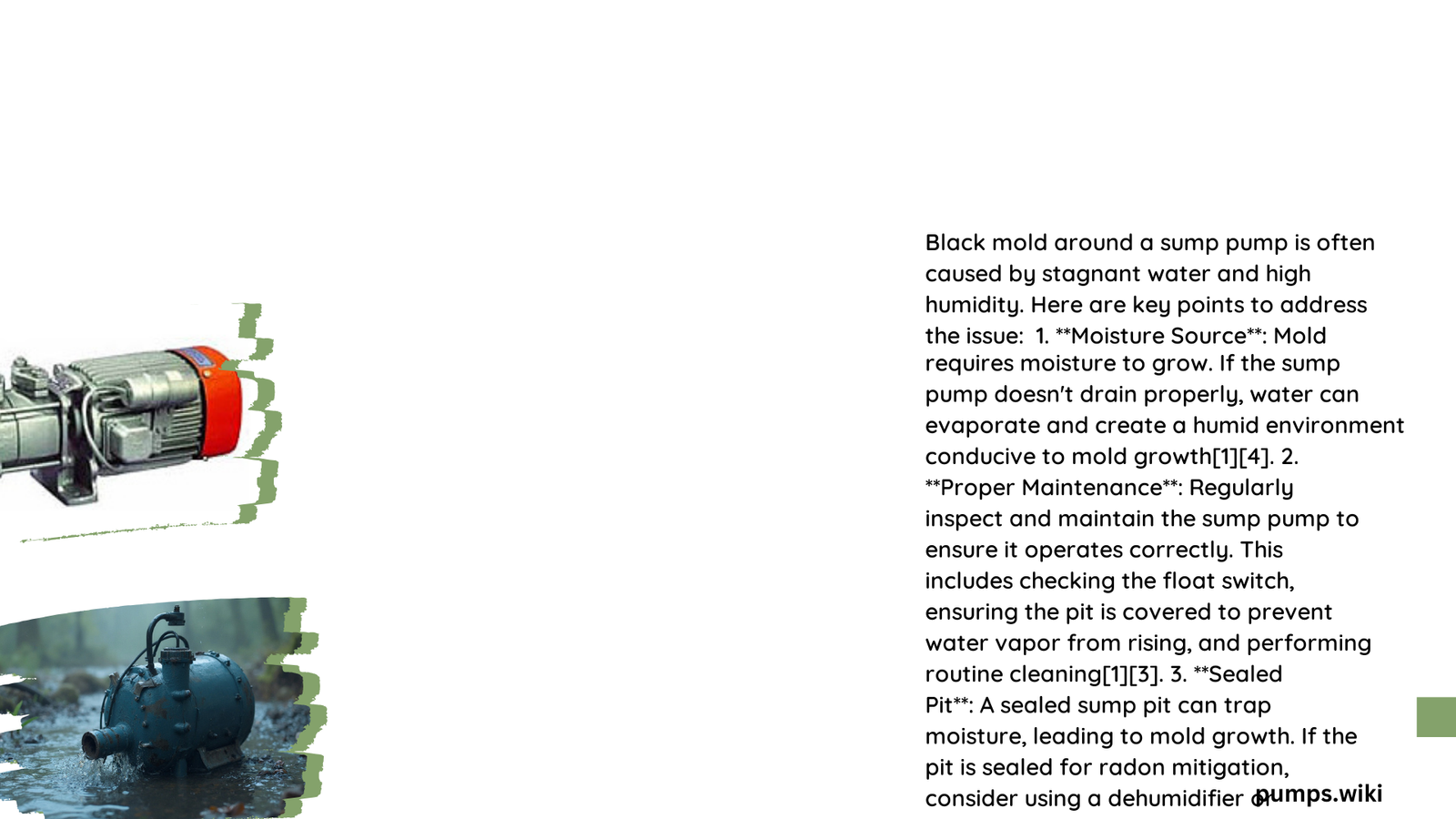Black mold around sump pumps represents a serious health and structural risk for homeowners. Thriving in damp, humid environments, these toxic fungi can rapidly colonize basement areas with poor drainage, creating potential respiratory hazards and compromising building integrity. Understanding the complex relationship between sump pump functionality and mold growth is crucial for maintaining a safe, healthy living space.
What Causes Black Mold to Develop Near Sump Pumps?
Why Do Moisture Conditions Trigger Mold Growth?
Black mold requires specific environmental conditions to proliferate. The sump pump area provides an ideal breeding ground due to:
- Constant Moisture Exposure
- Limited Air Circulation
- High Humidity Levels
- Organic Material Presence
Humidity and Temperature Factors
| Humidity Level | Mold Growth Potential | Risk Factor |
|---|---|---|
| 30-50% | Low Risk | Safe Zone |
| 50-70% | Moderate Risk | Caution Needed |
| 70-90% | High Risk | Immediate Action Required |
How Quickly Can Black Mold Spread?
Black mold can begin developing within 24-48 hours under optimal conditions. Factors accelerating growth include:
- Standing water in sump pit
- Inadequate ventilation
- Organic material accumulation
- Temperature between 77-86°F
Comprehensive Strategies for Black Mold Detection

What Are the Primary Warning Signs?
Homeowners should watch for:
- Musty odors near sump pump area
- Visible dark/black patches
- Respiratory irritation
- Unexplained allergic reactions
- Discoloration on walls/floors
How to Professionally Assess Mold Risks?
Professional assessment involves:
- Moisture meter readings
- Air quality testing
- Visual comprehensive inspection
- Sampling for mold species identification
Effective Removal and Prevention Techniques
What Cleaning Methods Work Best?
Recommended Cleaning Protocol:
- Wear protective equipment
- Isolate contaminated area
- Use EPA-approved fungicidal solutions
- Remove porous materials
- Thoroughly dry affected zones
- Apply preventative sealants
How to Prevent Future Mold Growth?
Prevention strategies include:
- Regular sump pump maintenance
- Install high-quality dehumidifiers
- Ensure proper drainage systems
- Conduct periodic moisture inspections
- Maintain basement humidity below 50%
Cost Considerations for Mold Remediation
What Are Potential Expenses?
| Remediation Level | Estimated Cost Range |
|---|---|
| Minor Intervention | $300 – $1,000 |
| Moderate Treatment | $1,000 – $3,500 |
| Extensive Remediation | $3,500 – $10,000+ |
Critical Health Implications
Black mold exposure can lead to:
- Respiratory complications
- Neurological symptoms
- Immune system suppression
- Potential long-term health risks
Professional Recommendations
Experts strongly advise:
– Annual professional inspections
– Immediate moisture intervention
– Comprehensive home humidity management
Pro Tip: Early detection and proactive maintenance are significantly more cost-effective than extensive remediation.
Conclusion
Understanding and managing black mold around sump pumps requires vigilance, knowledge, and strategic intervention. By implementing comprehensive moisture control strategies, homeowners can effectively mitigate risks and maintain a healthy living environment.
